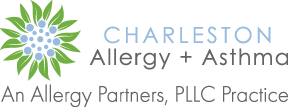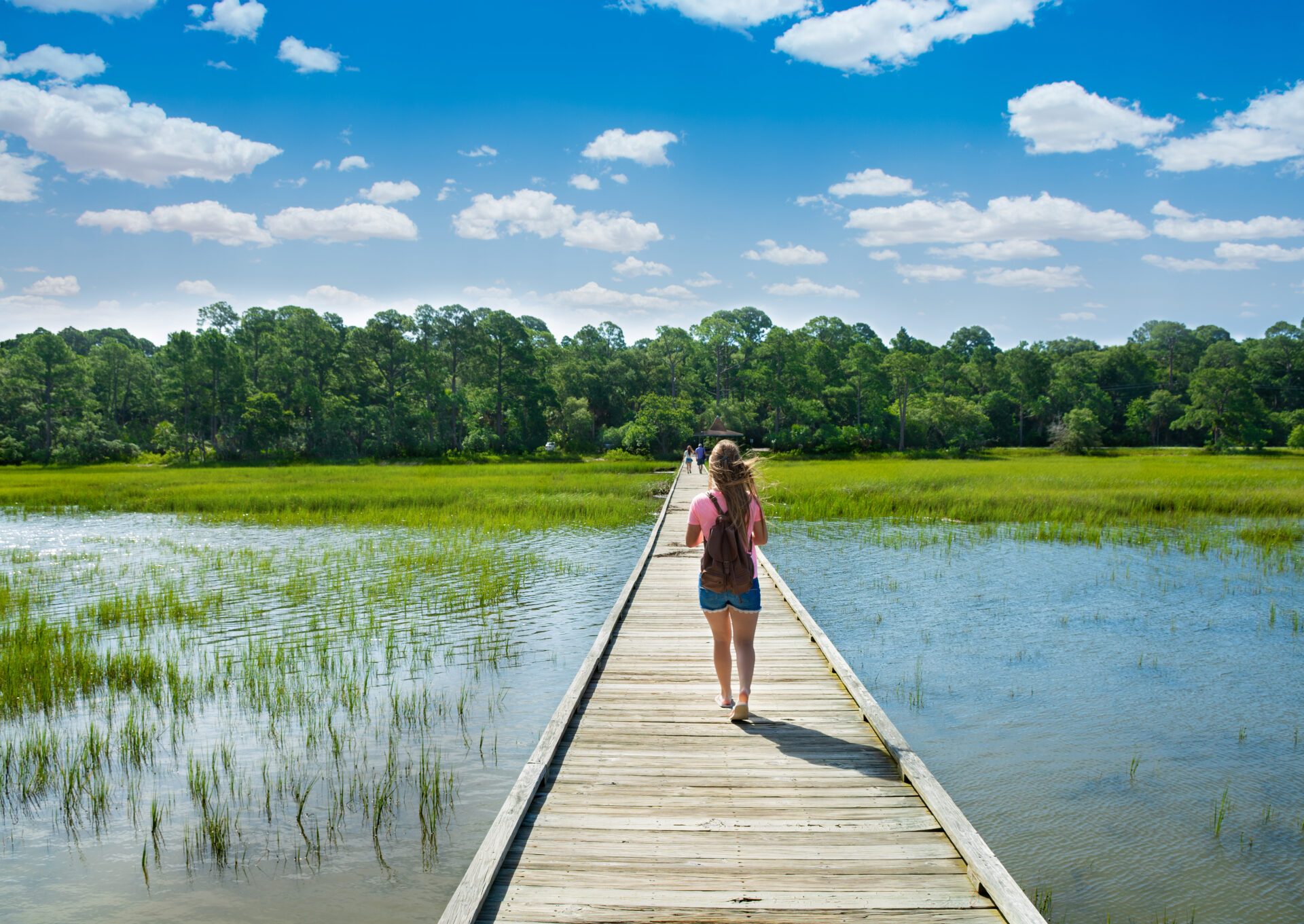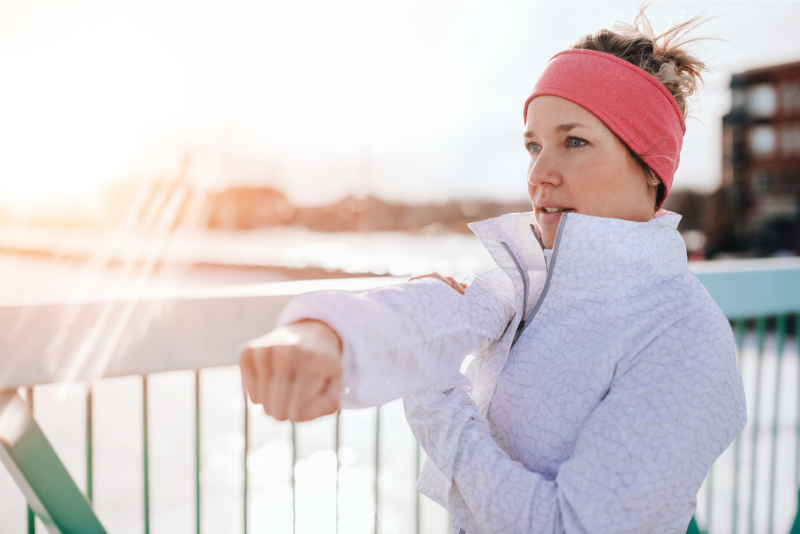There’s a lot to admire in the Lowcountry, no matter the season! But whether the trees are budding, leaves are falling or winds are whipping, allergy sufferers may find that the Lowcountry region can sometimes be harsh on their senses despite its beauty.
Each season presents unique challenges to allergy sufferers within the Charleston area. Luckily, with the right knowledge and treatment plan in place, you can enjoy the outdoor beauty of life in the Holy City.
Spring Allergies
The bees are buzzing and the flowers are blooming! It’s springtime in Charleston. Though this season is quite beautiful as life returns to the Lowcountry, it can also bring discomfort to those living with untreated pollen allergies.
While irritants that trigger reactions vary, pollen is the most common culprit with Allergic Rhinitis, or “Hay Fever,” affecting an estimated 19.2 million adults and 5.2 million children across the United States.
Contrary to popular belief, it is not the blooming flowers whose pollen causes allergies to flare up, nor the yellow pollen that you can see. Allergies are triggered by the pollen that is naked to the human eye. In the Lowcountry, our biggest spring tree pollinators are elm, juniper, oak, cedar and cypress. In later spring, pine, oak, birch, walnut and hickory are to blame. Although pine pollen is most prevalent, it is also the least allergenic with birch and oak being the worst for allergy sufferers.
It is worth noting that the Lowcountry pollen season is noticeably longer than in other regions, with some species pollinating from as soon as late January into the warm summer months. Environmental shifts caused by climate change have also played a part in creating intensified pollen seasons in Charleston and around the world.
Summer Allergies
Like the spring, pollen remains a significant cause of irritation for allergies in the summer. Allergy sufferers may notice their symptoms acting up due to pollinating grass in the region. This is the second of the three common pollen seasons: spring (trees), summer (grass) and fall (weeds).
Fortunately, symptoms will only last as long as your exposure. In these cases, and as with all allergies, knowledge is power. By recognizing your triggers, you can avoid allergens and reduce discomfort more easily.
It is wise to limit outdoor activities when pollen counts are high, such as in the morning hours between 5 to 10 a.m. Pollen meters like the one on our website can give you an accurate reading of allergen levels throughout the day to help you plan your schedule and avoid flare-ups. Our team collects the local pollen count daily to help keep Lowcountry citizens happy, healthy and informed.
However, pollen is not the only culprit for summer allergies. When temperatures improve and we head outside, bees and other bugs join us to enjoy the beautiful Lowcountry weather. As a result, allergic reactions to insect stings/bites are traditionally on the rise during this time. It should be noted that immunotherapy (allergy shots) is the best solution for those suffering from insect venom allergies.
Fall Allergies
Fall marks the third and final phase of Charleston’s pollen season. Allergies to weed pollen are most frequent during this time, with Lowcountry sufferers particularly affected by the local ragweed spores.
Even though allergens may seem sparse during the fall season, staying tuned to local pollen levels is a must when living in the Lowcountry. Windy fall days can help spores spread, carrying the allergen miles from its origin point.
Another common cause for fall allergy flare-ups includes mold, which may affect unsuspecting yard workers as they clean up decaying leaves. Outdoor molds are present year-round in the Lowcountry, but levels tend to incline during the autumn months due to our extended warm season and high humidity.
Winter Allergies
As temperatures fall, the winter months will end our extended pollen allergy season. However, colder weather means more time indoors. As you move inside, you may notice that year-round allergens such as mold, cockroaches, pet dander and dust mites may make allergy symptoms worse as you spend extended time indoors.
Nasal allergies are most common in the winter months. These wintertime allergies result from exposure to indoor allergens such as dust, mold and pet dander. Other irritants may include smoke from cigarettes or fireplaces and cleaning products.
If you suspect you might suffer from indoor/winter allergies, watch for symptoms that include sneezing and coughing, dark circles under eyes, runny nose and itchy eyes.
Tips to Limit Exposure
Life with allergies can feel difficult if left unmanaged, but it doesn’t need to be. There are options available that can bring long-term relief, such as immunotherapy (allergy shots) which are currently the closest “cure” for seasonal allergies available. While over-the-counter medications are available for allergy treatment, they only treat symptoms of allergies and don’t address the actual cause of the allergic reaction. By working with your board-certified allergist, they can test for your specific allergies and create a custom-tailored treatment plan just for you.
You can also try adopting these quick tips to help avoid allergies and live a symptom-free life all year long:
To limit spring, summer and fall allergy symptoms:
- Keep doors and windows closed to keep pollen out.
- Avoid touching your face when enjoying outdoor activities.
- Wear a mask while doing outdoor chores such as mowing and raking leaves.
- Shower and change clothes when returning home from extended periods spent outside.
- Speak with your board-certified allergist about testing and treatment plans.
To limit wintertime and year-round allergy symptoms:
- Conduct regular deep-cleaning sessions to avoid any build-up of allergens such as dust and pet dander, and wear a mask while doing so.
- Wash sheets and linens often to avoid sensitivity to dust mites and pet dander.
- Purchase a dehumidifier to help reduce excess moisture that could lead to mold.
For any and all allergies, your first step of care should be to speak with a board-certified allergist. If you are experiencing seasonal allergies, contact us today to schedule an appointment. Our skilled team can diagnose your allergy triggers and help you find relief.




